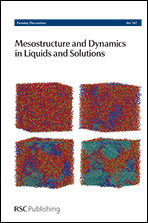The thermodynamical response functions and the origin of the anomalous behavior of liquid water
Abstract
The density maximum of water dominates the thermodynamics of the system under ambient conditions, is strongly P-dependent, and disappears at a crossover pressure Pcross ∼ 1.8 kbar. We study this variable across a wide area of the T–P phase diagram. We consider old and new data of both the isothermal compressibility KT(T, P), the pressure constant specific heat CP(T) and the coefficient of thermal expansion αP (T, P). We observe that KT(T) shows a minimum at T* ∼ 315 ± 5 K for all of the studied pressures, whereas, at the same temperature, CP(T) has the minimal variation as a function of P in the interval 1 bar–4 kbar. We find the behavior of αP also to be surprising: all the αP(T) curves measured at different P cross at T*. The experimental data show a “singular and universal expansivity point” at T* ∼ 315 K and αP(T*) ≃ 0.44 10−3 K−1. Unlike other water singularities, we find this temperature to be thermodynamically consistent in the relationship connecting the three response functions. By considering also the P–T behavior of the self-diffusion coefficient DS and of the NMR proton chemical shift δ we have the information that at T* the water local order points out, with decreasing T, the crossover from a normal fluid to the anomalous and complex liquid characterized by the many anomalies.
- This article is part of the themed collection: Mesostructure and Dynamics in Liquids and Solutions

 Please wait while we load your content...
Please wait while we load your content...